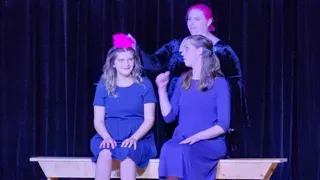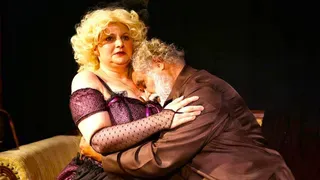January 19, 2014
Parsons Dance at the Joyce
Steve Weinstein READ TIME: 2 MIN.
For its winter season at the Joyce, David Parsons has wisely chosen an eclectic collection of shorter works that shows off his eponymous company to full advantage.
Parsons is a terrific choreographer, one of the best around. He's got both feet firmly planted in contemporary dance, but he equally understands other idioms, from hip-hop to classical ballet, and is able to incorporate them into his pieces. A choreographer is only as good as the dancers interpreting his work, however. Fortunately, "Parsons Dance" is full of first-rate talent.
It's hardly surprising that both programs being presented during the 12-day season at the Joyce include "Caught," which has become the company's signature work. Some may dismiss this as gimmicky, such as a Times review who dismissed it two years ago as "a fail-safe contraption."
The dancer -- here, the always-excellent Clifton Brown, who seems to be everywhere these days -- executes the jumps in which he seems to be suspended in mid-air flawlessly. A strobe light captures the suspensions, but it takes a great deal of skill to be able to coordinate the split-second timing. "Everyone understands this trick," the Time writer sneered. "Everyone is thrilled."
And that's bad because... ? This kind of dismissive backhanding at a piece that had the audience literally cheering points to the problem of professional dance writers: They attend so many performances that they forget that they're reviewers as well as critics.
Parsons has long been dogged by the disconnect between "artistic" and "crowd pleasing." "Nascimento Novo," for example, set to a terrific samba score, presents the dancers in various patterns, from pile-ups to hip-thrusting outbursts. The movements all beautifully comment on the music and are a joy to watch.
"The Introduction," the one world premiere, gives eight dancers solos. Each one brings a unique flavor, from erotic yearning to pure exuberance. If I had to choose one standout, it would have to be Elena D'Amario, whose muscularity, long-limbed legs and flying hair give her dancing a sexy athleticism.
In "Brothers," two men perform kinetic, sudden movements and balance off each other. They're alternately tender and confrontational; a final hug before they walk away together implies that this is as much mating ritual as pure dance.
If there is is anything missing from this season's works, it's Parsons' usual borrowings from popular music. This is, after all, the company that has utilized Steely Dan songs, bluegrass and disco. The 2014 season veers toward avant-garde classical, with a nod to Brazil.
"The Hunt," presented on Program A, has a kind-of non-score score, mostly urban drums via a group called Les Tambours du Bronx. In "The Hunt," male dancers propel themselves across the stage in movements from a shimmy to fall-and-response.
The work, borrowed from Alvin Ailey, was choreographed by Robert Battle, now Ailey's artistic director and himself a Parsons' alumnus. Now in its 30th season, Parsons has had an influence throughout the dance world. "The Hunt" shows how profoundly the dance world takes David Parsons' choreographic genius. Where some critics would prefer to snipe, you can just sit back and enjoy a true genius at the top of his game.
Steve Weinstein has been a regular correspondent for the International Herald Tribune, the Advocate, the Village Voice and Out. He has been covering the AIDS crisis since the early '80s, when he began his career. He is the author of "The Q Guide to Fire Island" (Alyson, 2007).







